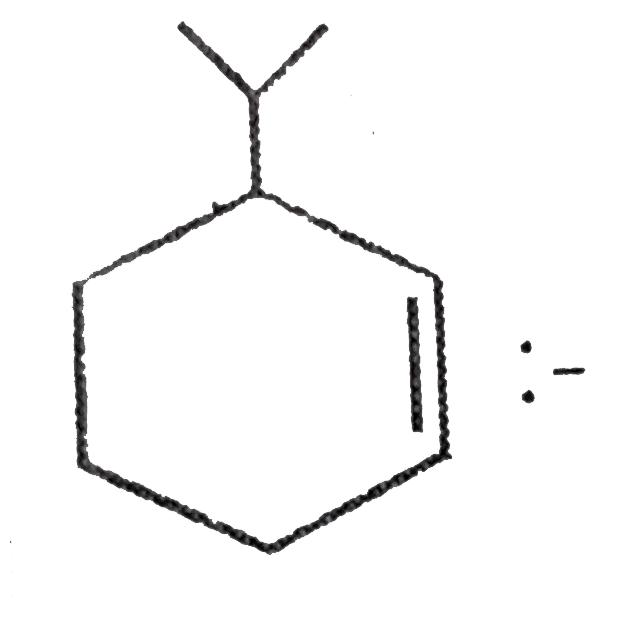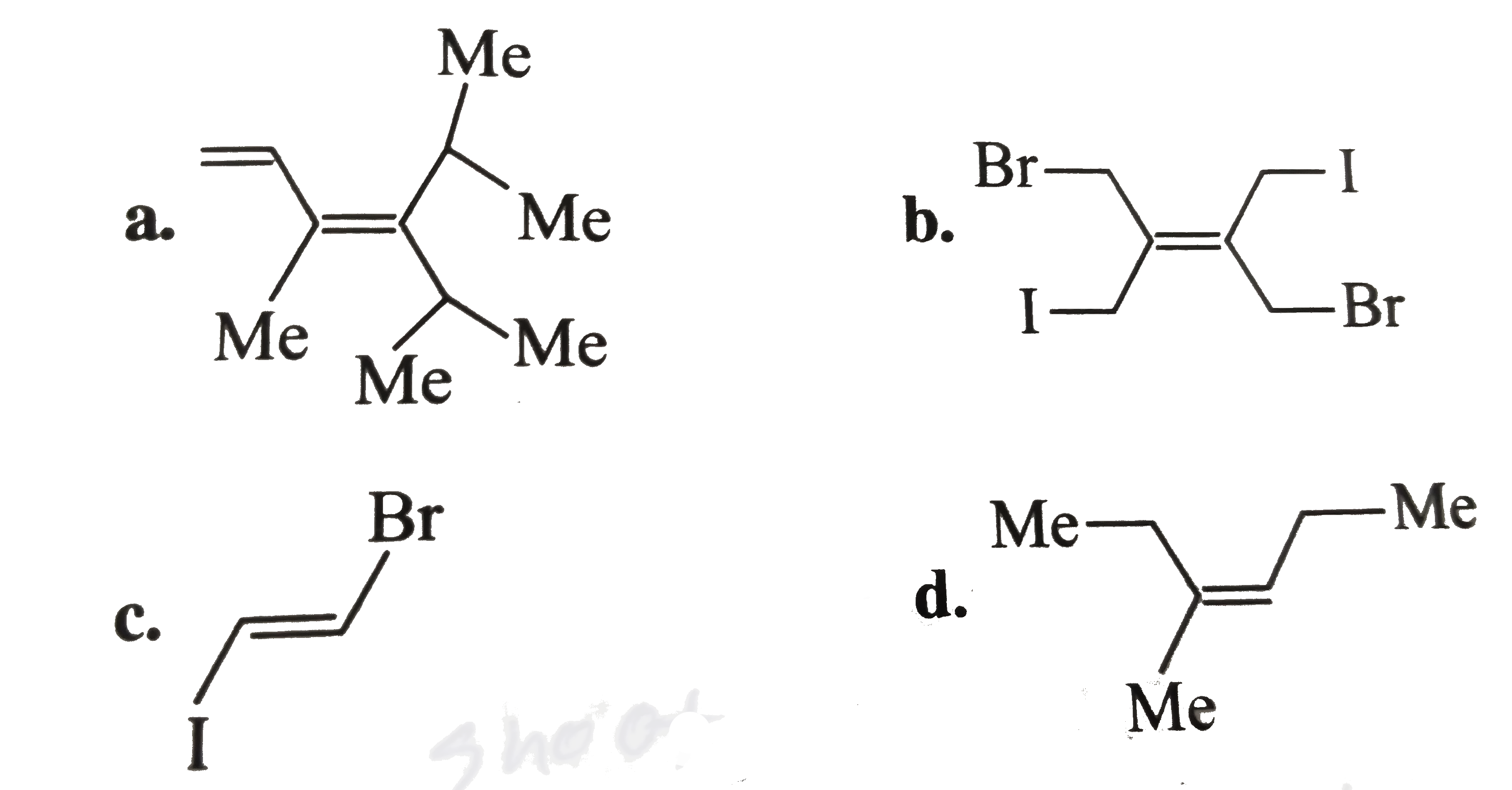Anti-Markownikoff addition of HBr is NOT observed in which of the following alkenes?
Propene
But-1-ene
But-2-ene
Pent-1-ene
To determine which alkene does not exhibit anti-Markovnikov addition of HBr, we need to analyze the structures of the given alkenes and apply the concepts of Markovnikov's and anti-Markovnikov's rules.
1. Understand Markovnikov's Rule:
- Markovnikov's rule states that when HX (where X is a halogen) is added to an unsymmetrical alkene, the hydrogen atom will attach to the carbon with more hydrogen atoms already attached, while the halogen will attach to the carbon with fewer hydrogen atoms.
2. Understand Anti-Markovnikov's Rule:
- Anti-Markovnikov's addition occurs in the presence of peroxides, where the addition of HX happens in the opposite manner: the halogen attaches to the carbon with more hydrogen atoms, and the hydrogen attaches to the carbon with fewer hydrogen atoms.
3. Identify the Alkenes:
- The alkenes given are:
- A) Propene (CH3-CH=CH2)
- B) 1-Butene (CH3-CH2-CH=CH2)
- C) 2-Butene (CH3-CH=CH-CH3)
- D) 1-Pentene (CH3-CH2-CH2-CH=CH2)
4. Analyze Each Alkene:
- Propene (A): This is an unsymmetrical alkene. Both Markovnikov and anti-Markovnikov additions can occur.
- 1-Butene (B): This is also an unsymmetrical alkene. Both additions can occur here as well.
- 2-Butene (C): This is a symmetrical alkene. The two carbons on either side of the double bond are identical, meaning that there is no preference for where the hydrogen or bromine will add. Therefore, neither Markovnikov nor anti-Markovnikov addition is applicable.
- 1-Pentene (D): This is an unsymmetrical alkene. Both additions can occur here.
5. Conclusion:
- The alkene that does not exhibit anti-Markovnikov addition of HBr is 2-Butene (C), as it is symmetrical and does not allow for the differentiation needed for either rule to apply.
Final Answer:
C) 2-Butene
- Markovnikov's rule states that when HX (where X is a halogen) is added to an unsymmetrical alkene, the hydrogen atom will attach to the carbon with more hydrogen atoms already attached, while the halogen will attach to the carbon with fewer hydrogen atoms.
- Anti-Markovnikov's addition occurs in the presence of peroxides, where the addition of HX happens in the opposite manner: the halogen attaches to the carbon with more hydrogen atoms, and the hydrogen attaches to the carbon with fewer hydrogen atoms.
- The alkenes given are:
- A) Propene (CH3-CH=CH2)
- B) 1-Butene (CH3-CH2-CH=CH2)
- C) 2-Butene (CH3-CH=CH-CH3)
- D) 1-Pentene (CH3-CH2-CH2-CH=CH2)
- Propene (A): This is an unsymmetrical alkene. Both Markovnikov and anti-Markovnikov additions can occur.
- 1-Butene (B): This is also an unsymmetrical alkene. Both additions can occur here as well.
- 2-Butene (C): This is a symmetrical alkene. The two carbons on either side of the double bond are identical, meaning that there is no preference for where the hydrogen or bromine will add. Therefore, neither Markovnikov nor anti-Markovnikov addition is applicable.
- 1-Pentene (D): This is an unsymmetrical alkene. Both additions can occur here.
- The alkene that does not exhibit anti-Markovnikov addition of HBr is 2-Butene (C), as it is symmetrical and does not allow for the differentiation needed for either rule to apply.
C) 2-Butene
Topper's Solved these Questions
- BOOK - ICSECHAPTER - QUESTION PAPER 2022 TERM 1EXERCISE - question1videos
QUESTION PAPER 2022 TERM 1
- BOOK - ICSECHAPTER - PROLEMS BASED ON CHEMICAL STRUCTURES AND REACTIONS EXERCISE - QUESTIONS185videos
PROLEMS BASED ON CHEMICAL STRUCTURES AND REACTIONS
- BOOK - ICSECHAPTER - SAMPLE PAPER 3 (CHEMISTRY) EXERCISE - QUESTIONS70videos
SAMPLE PAPER 3 (CHEMISTRY)
Similar Questions
Anti-Markownikoff's addition of HBr is not observed in
View SolutionThe addition of HBr is the easiest with
View SolutionDiscuss the mechanism of anti-Markownikoff addition of HBr to an unsymmetrical alkene.
View SolutionWhich of the following alkenes is most stable?
View SolutionWhich of the following are addition polymers?
View SolutionWhich of the following alkene is more stable than
 View Solution
View SolutionWhich of the following alkenes have diasteremores?
 View Solution
View SolutionWhich of the following alkene is the most unstable
View SolutionWhich of the following will give Hofamann alkene?
View SolutionWhich of the following alkenes is the most stable ?
View Solution
